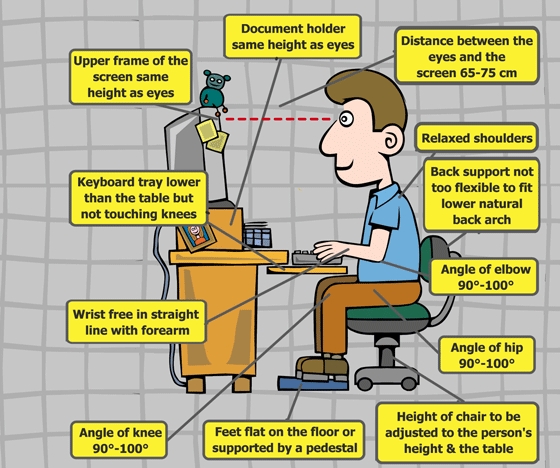Contrary to popular believe, the purpose of ergonomically correct computer furnishings and accessories have very little to do with comfort; they have more to do with preventing repetitive stress injury. While comfort is certainly an important consideration, it is rather in the field of improved productivity where ergonomically correct workstations and equipment makes the most sense. Repetitive stress injury has been acknowledged as a threat to productivity for some time, but this condition is on the increase and more and more people, especially those that spend many hours each day in from of their computers, complain of debilitating pain and discomfort. Repetitive stress injury may be more serious than previously thought. Expert and independent studies have shown that injuries caused by the repetitive use of one part of the body or even just a specific muscle group not only cause damage, but that the damage may be increased and aggravated in time. This is way neuro-scientific experts now start to refer to the condition as Cumulative Trauma Disorder. The name alone says much: the term “cumulative” indicates that the injury will get worse as time goes by, while the term “trauma” indicates definite injury, rather than mere discomfort or mild pain.

Photo taken from unboundedmedicine.com
Repetitive Stress Injury
Cumulative Trauma Disorder is caused when specific muscles or part of the body is abused or injured, a little bit at a time but nevertheless as serious as a sudden injury. The danger lies in the fact that this condition does not become apparent immediately. Because the injuries are created over a long time period, many people do not pay attention to taking proper precautions to prevent injuries. In this way many workers ignore the advice from experts that can show them of a better posture and some basic exercises can do much to alleviate this problem. In time, Cumulative Trauma Disorder can result in serious injuries. Typical symptoms include discomfort and localized pain, inflammation, numbness, uncommon tingling and other maladies not often associated with the condition at first. In later stages, Cumulative Trauma Disorder may result in reduced dexterity and difficulty to perform eye-hand coordination tasks. The presence of any one or more of these symptoms is a clear indication that medial help should be sought. If the condition is not treated, the symptoms will simply become worse and it may even require invasive treatment such as surgery.
It is important to keep in mind that injuries, even if they seem to be minor at first, can eventually render a person unable to work, or to work at a greatly reduced level of productivity. It is therefore important to look out for the symptoms and to take immediate steps to alleviate the condition and to prevent it from causing further damage, and to prevent repetitive stress injury.


 (7 votes, average: 4.14 out of 5)
(7 votes, average: 4.14 out of 5)









